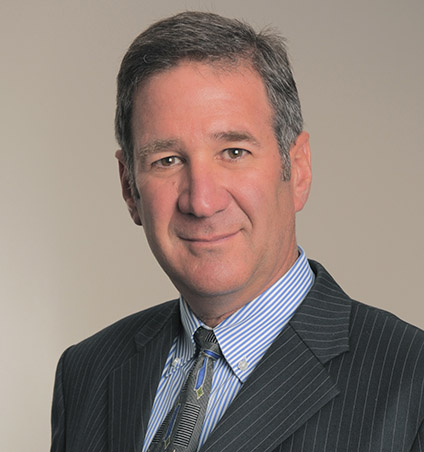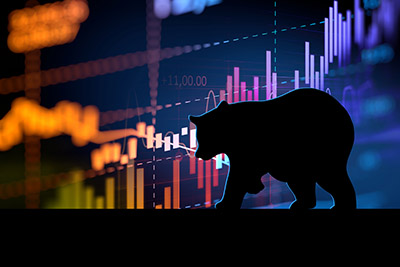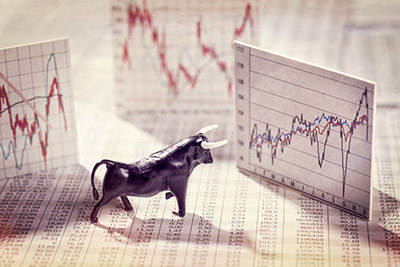Charting the Course
Who Are You Gonna Believe? Me or Your Own Eyes?
By Mitch Siegler, Senior Managing Director
 This line from comedian Chico Marx in the film “Duck Soup” sums up our feelings about Federal Reserve (Fed) pronouncements on interest rates and the real world we inhabit where prices of so many items have been skyrocketing.
This line from comedian Chico Marx in the film “Duck Soup” sums up our feelings about Federal Reserve (Fed) pronouncements on interest rates and the real world we inhabit where prices of so many items have been skyrocketing.
The Fed has been keeping short-term interest rates near zero while buying $120 billion of debt securities each month – this includes $40 billion of mortgages even as home prices are going through the roof. All of this has the effect of holding down long-term interest rates.
Last fall, the Fed committed to not raise short-term interest rates until “labor market conditions have reached levels consistent with the committee’s assessments of maximum time.” The Fed has since repeated this promise to be patient at each monthly policy meeting since. Let’s unpack that statement to understand what it means for Fed policy and interest rates. Consider this:
- These statements represent a significant shift in Fed policy. Back in the day, the Fed promised to slow economic growth (aka “remove the punchbowl”) to keep inflation in check. Now, the Fed is telling investors that it’s willing to wait until well after the economy has fully recovered before raising rates to cool an overheating economy.
- The Fed’s monetary strategy was previously centered around a 2% inflation target. The new strategy could allow substantially higher inflation for longer. The Fed will now “aim to achieve inflation moderately above 2% for some time if inflation has been running persistently below 2%.” At the risk of stating the obvious, the language is a bit ambiguous. Since the Fed’s measure of annual price inflation has been averaging less than 1.6% for a decade, the new guidance could allow inflation averaging 2.4% for the next decade without setting off alarm bells.
- Discipline is not all that difficult when times are good. It’s when times are tough that discipline is so critical. This relates to inflation since the Fed’s policy is great in theory – when inflation is on the distant horizon – but it’s tougher for central bankers to look the other way when inflation is knocking on the door.
- The pandemic shifted the goalposts a bit. In late 2019, Fed officials forecast annual inflation of 2% from 2020 through 2023. Inflation in 2020 was just 1.2%. Now, some Fed governors see 3% inflation in 2021, attributable to pandemic-related shocks to supply chains. The Fed sees this year’s economic growth as being above normal because growth was sub-par during the pandemic and it’s looking to smooth out the peaks and valleys in its forecasting. The speed with which supply chain and labor issues are resolved may tell the tale on inflation (and interest rates) in the years ahead.
The Bear Case for Inflation and Interest Rates
 Like the Fed, many investors and investment analysts are betting on rates remaining low until 2023. Their arguments center on economic growth being overstated as the economy reopens, continued high unemployment, considerable slack in the economy and concerns about closures caused by outbreaks from the Delta variant leading to slower economic growth.
Like the Fed, many investors and investment analysts are betting on rates remaining low until 2023. Their arguments center on economic growth being overstated as the economy reopens, continued high unemployment, considerable slack in the economy and concerns about closures caused by outbreaks from the Delta variant leading to slower economic growth.
The focus on waiting until the economy reaches full employment – a tenet of Fed behavior in past economic recoveries – seems to have been deemphasized this time. Perhaps that’s because there are so many unknowns relating to employment now.
Some of these tectonic shifts are apparent in the bond market. The Minneapolis Fed’s probability assessments, based on derivative contracts, indicated a 45% likelihood in May of 3% or higher annual inflation over the next five years and just a 30% likelihood in June. That correlates with a one-third fall in the 10-year Treasury rate, from 1.70% in May to under 1.20% in early August.
U.S. government securities now yield less than nothing after factoring in inflation. The real return on 10-year Treasury inflation-protected securities (TIPS) is -1.09% – before giving effect to future inflation. Based on the nominal yield on the 10-year of 1.29%at press time, the effective rate of inflation to generate breakeven for investors is 2.38%. If bond yields rise, as seems likely, the corresponding declines in the value of the underlying bonds would overwhelm the tiny rates of interest they pay. That’s the inverse of what we saw 40 years ago as double-digit rates provided a big cushion to protect investors from further rises in inflation and declines in the value of the bonds themselves. This was born out over four decades as interest rates steadily fell and bond prices rose. Investors and their financial advisors could feel the sting of a rise in interest rates from today’s ultra-low levels if they continue to hold a traditional 60/40 (60% stocks/40% bonds) investment portfolio.
A Big Wild Card: The Labor Shortage
A key tenet of the Fed’s conclusion that inflation is transitory is that supply chain challenges and labor shortages are temporary and will resolve themselves soon. Chat up a server at a restaurant or a desk clerk at a hotel and you’ll hear a familiar refrain: Virtually every service industry is seriously short-staffed, a problem that has persisted for months and shows no signs of reversing anytime soon. No-shows mean waitstaff doubling as dishwashers and hotel managers as reservation agents or housekeeping staff.
Help Wanted signs are everywhere and higher wages don’t seem to be making a dent. There’s almost a perfect match in the number of job openings (9.2 million) and unemployed Americans (9.5 million) but as summer wanes, the labor shortages continue. Employers hope for a fall turnaround – driven by the expiration of enhanced unemployment benefits on September 6 and kids returning to school in the weeks ahead – but we’re not holding our breath. “It’s very likely that September will come and go, and the issue won’t resolve itself,” says Ed Yardeni, president of Yardeni Research. Like it or not, generous jobless benefits seem to have made unemployment the preferred economic decision for millions of low-wage workers and there’s no question that millions of parents exited the workforce when schools went virtual during the pandemic – many have not returned.
There are other contributing factors as well. Immigration, the driving force for many service industries, slowed to a crawl during the pandemic. Older workers left the workforce at a much higher rate during the pandemic; those 62 and older retired at a 15% clip during the pandemic as compared with a 10% rate during the Great Recession. And small companies must now compete with the big boys, like Amazon, which has boosted its starting wage to $15/hour. That’s the effective pay rate for those collecting unemployment in Pennsylvania, a state with an official minimum wage of just half of that amount. It doesn’t take an economist to conclude that wage rates in many areas and industries will likely rise. And new fears about the Delta variant may be dampening worker enthusiasm about returning to work.
Of course, there are plenty of fine arguments on the other side of the ledger. Cost pressures from supply chain disruptions are leading to layoffs in manufacturing. Automation and productivity-enhancing investments in software, robotics and workflow enhancements will likely cause many of today’s unfilled positions to ultimately become obsolete. A McKinsey & Co. study last fall found that companies digitized 20 to 25 times as quickly as they previously thought possible during the pandemic.
 The Bull Case for Inflation and Interest Rates
The Bull Case for Inflation and Interest Rates
Several Fed Governors have said they want to begin raising rates as early as 2022 to control inflation. And in early August, Fed Governor Christopher Waller told CNBC the Fed could begin tapering bond purchases, another form of tightening, this October.
This isn’t your parents’ Fed. The Fed has purchased more than three-quarters of all federal debt issued during the pandemic, nearly nine times the share of Federal debt purchased during WWII. Today, the Fed holds more than one-third of all such debt owned by the public – an amount equivalent to that held by all other U.S. investors combined. In addition, the Fed holds 35% of all Federally insured mortgage-backed securities. So, when the Fed assures us that the increase in inflation is transitory and interest rates won’t rise until 2023, we take those assurances with a large grain of salt – especially since the Fed has already boosted the rates it pays on reverse-repo borrowings and on bank reserves. Channeling Alfred E. Neuman, “What, me worry?”
Notwithstanding Fed pronouncements to the contrary, we see inflation around every corner. Home values are exploding, used car prices are at peak levels, stock market indices are at or near records. Demand for rental housing is off the charts and rent growth can’t be far behind, as evidenced by the red-hot apartment market. Prices at the pump are higher than we can remember for a long time and backorders, shortages and supply chain pressures are commonplace.
The most common measure of inflation, the Consumer Price Index (CPI), rose 5.4% in June compared with a year earlier, the fastest pace since 2008. The Fed’s preferred inflation measure, the Personal Consumption Index, at 3.9% in May, rose at a slower pace but is still well above the central bank’s 2% average inflation target.
How to Make Sense of It All?
It has been a year since the Fed committed to maintain short-term interest rates “until labor market conditions have reached levels…of maximum employment and inflation…is on track to moderately exceed 2% for some time.” The Fed has continued to repeat this pledge at its regular policy meetings. However, some Fed officials appear to be waffling on this promise, with implications for both economic growth and the central bank’s credibility. Instead of promising to take away the punchbowl when the party gets out of hand to squelch inflation, the Fed is now saying that it’s willing to wait patiently until well after the economy has fully recovered – and inflation may have begun to take hold – before tightening.
Ken Langone, co-founder of Home Depot thinks the Fed may be missing the mark. He cites rising commodity prices and labor shortages as setting the stage for higher inflation and is particularly concerned about the prospect of additional trillions in government spending. “I think you’re going to take a white-hot fire and throw a 5-gallon gas can on top of it. You’re going to have flames so high it’s going to be incredible,” Langone said in a July 28 CNBC interview.
So, who are you gonna believe?
Mitch Siegler is Senior Managing Director of Pathfinder Partners. Prior to co-founding Pathfinder in 2006, Mitch founded and served as CEO of several companies and was a partner with an investment banking and venture capital firm. He can be reached at msiegler@pathfinderfunds.com.
Share this Article
IN THIS ISSUE
PATHFINDER PARTNERS INCOME FUND, L.P
A Stablized Multifamily Fund
CHARTING THE COURSE
Who Are You Gonna Believe? Me or Your Own Eyes?
FINDING YOUR PATH
The Eviction Moratorium Must End
GUEST FEATURE
Planning for Transitions – Big and Small
ZEITGEIST
Sign of the Times
TRAILBLAZING
Breeze Hill, Vista (San Diego), CA
NOTABLES AND QUOTABLES
Uncertainty
